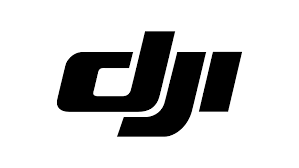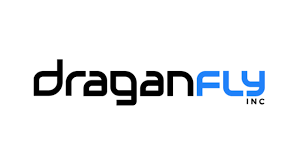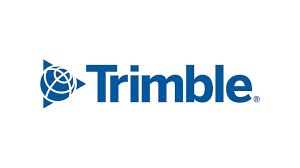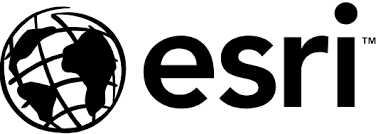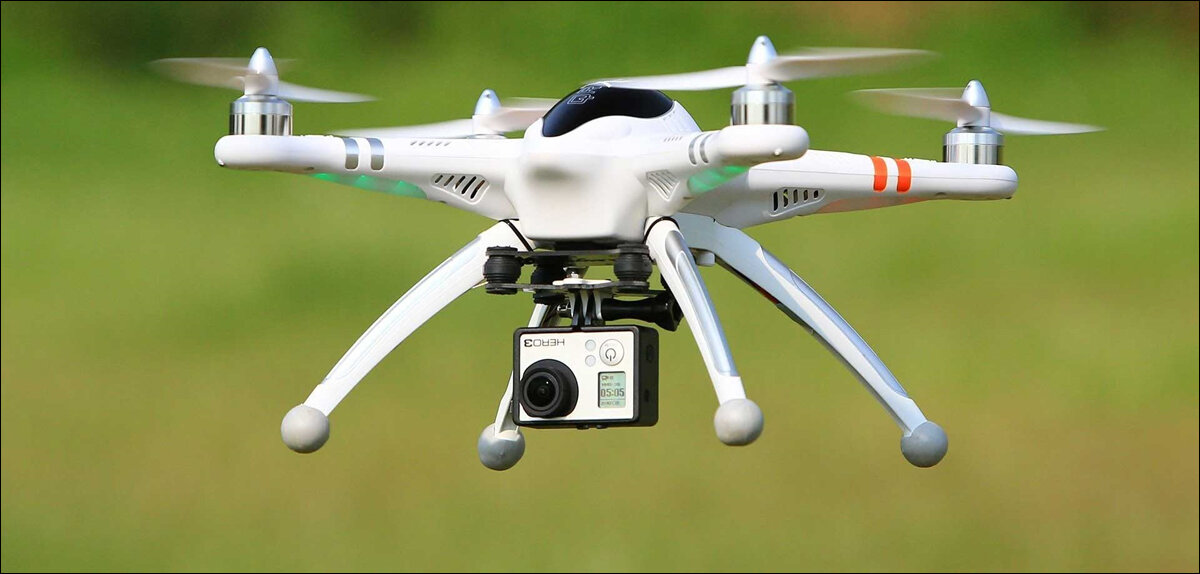Drones have revolutionized industries across the globe, making tasks faster, safer, and more efficient. From aerial photography to industrial inspections, drones are at the forefront of innovation. This comprehensive guide will introduce you to the top drone companies driving the industry forward, their cutting-edge technologies, and their influence on modern applications.
Top Drone Companies in the Industry
Top Drone Software Companies
1. DJI: The Global Leader in Consumer and Commercial Drones
DJI, headquartered in Shenzhen, China, is a dominant force in the drone industry. Known for its innovative designs and user-friendly features, DJI caters to both amateur enthusiasts and professional industries.
Key Offerings:
- Phantom Series: Renowned for stability and precision, ideal for photography and filmmaking.
- Mavic Series: Compact and portable drones offering 4K video quality.
- Enterprise Solutions: Customized drones for agriculture, inspections, and search-and-rescue missions.
Why DJI Stands Out:
- Advanced Technology: Superior gimbals, obstacle avoidance systems, and long flight times.
- Global Reach: An extensive distribution network makes DJI a household name worldwide.
2. Parrot: European Excellence in Drone Technology
Parrot, based in France, focuses on high-performance drones that cater to both consumers and professionals. Their commitment to quality and innovation has earned them a solid reputation.
Notable Products:
- Anafi Series: Lightweight, foldable drones with exceptional zoom and thermal imaging capabilities.
- Professional Drones: Designed for precision agriculture, 3D mapping, and environmental monitoring.
Unique Features:
- Parrot drones are known for their versatility and durability, making them suitable for diverse applications.
3. Skydio: Pioneering Autonomous Flight
Skydio, a U.S.-based company, has redefined drone technology with its focus on autonomous flight systems. Skydio’s drones are equipped with state-of-the-art AI for seamless navigation and obstacle avoidance.
Top Models:
- Skydio 2+: A consumer-friendly drone offering unparalleled autonomous tracking.
- Skydio X2: Designed for enterprise use, featuring thermal imaging and night vision.
Industry Impact:
Skydio’s technology is a game-changer for industries requiring precise operations, such as infrastructure inspection and public safety.
4. Autel Robotics: Versatility and Innovation
Autel Robotics is an emerging leader offering drones with top-tier camera technology and user-friendly interfaces. Their drones cater to photography enthusiasts and professionals alike.
Featured Drones:
- EVO Series: Compact drones with impressive flight stability and HDR imaging.
- EVO Max: Advanced industrial solutions with long-range capabilities.
Strengths:
- Autel Robotics is celebrated for its high-quality imaging and robust performance in challenging environments.
5. Yuneec: A Trailblazer in Aerial Photography
Yuneec, originally a pioneer in electric aviation, now focuses on crafting drones that deliver superior aerial imaging. Based in China, Yuneec has become a favorite among filmmakers and surveyors.
Popular Models:
- Typhoon Series: Known for 4K video capture and extensive flight features.
- H520E: Built for commercial applications like surveying and inspection.
Key Innovations:
Yuneec stands out with its affordable pricing and user-centric designs, making professional-grade drones accessible to a wider audience.
6. AeroVironment: Military and Defense Specialists
AeroVironment specializes in creating drones for military and defense applications. Their expertise in unmanned aerial systems (UAS) has made them a trusted partner for governments worldwide.
Flagship Products:
- Switchblade: A tactical drone used in military operations.
- Quantix Recon: Designed for reconnaissance and intelligence gathering.
Competitive Edge:
AeroVironment is renowned for its precision engineering and ability to deliver reliable solutions under demanding conditions.
7. Wing: Transforming Drone Deliveries
Wing, a subsidiary of Alphabet (Google’s parent company), is leading the way in drone delivery systems. Wing has successfully implemented drone delivery programs in various countries.
Key Highlights:
- Autonomous Deliveries: Efficient delivery of packages, groceries, and medicines.
- Innovative Fleet: Lightweight drones capable of carrying small payloads.
Vision:
Wing is revolutionizing last-mile logistics with its commitment to sustainability and speed.
8. EHang: Leading Urban Air Mobility
EHang, a Chinese company, specializes in passenger-grade drones and aerial logistics. Their cutting-edge technology is shaping the future of urban transportation.
Groundbreaking Models:
- EHang 216: A passenger drone designed for short urban commutes.
- EHang Falcon: Used for smart city management and cargo transport.
Future Outlook:
EHang’s vision of autonomous aerial mobility has positioned it as a key player in the evolving drone ecosystem.
9. Kespry: Optimizing Industrial Inspections
Kespry focuses on providing drone-based solutions for industrial sectors like construction, mining, and insurance.
Service Offerings:
- High-precision drones for aerial data collection.
- Cloud-based platforms for processing and analyzing collected data.
Benefits:
Kespry’s drones improve operational efficiency by delivering accurate and actionable insights.
10. Delair: Expertise in Long-Range Drones
Delair, based in France, specializes in fixed-wing drones designed for long-range missions. Their solutions cater to industries like agriculture, energy, and infrastructure.
Noteworthy Drones:
- UX11: Ideal for surveying large areas with precision.
- DT26: Built for extended flight durations and rugged environments.
Distinctive Features:
Delair’s drones are equipped with advanced imaging technology and real-time data transmission.
Drone Technology: A Comprehensive Overview
Drones, also known as Unmanned Aerial Vehicles (UAVs), are revolutionizing industries and redefining modern technology. From photography and surveillance to agriculture and delivery systems, drones have transformed how tasks are performed. This article provides an in-depth look at drones, their types, uses, and the latest advancements shaping their future.
What is a Drone?
A drone is an unmanned aircraft operated either remotely or autonomously using pre-programmed software and onboard sensors. Equipped with cameras, GPS systems, and advanced sensors, drones can perform a wide range of tasks efficiently and accurately.
Types of Drones
Drones come in various designs and functionalities, catering to diverse needs:
1. Consumer Drones
These drones are designed for hobbyists and enthusiasts, offering features like high-resolution cameras and ease of use.
- Examples: DJI Mavic Mini, Parrot Anafi.
- Uses: Aerial photography, personal projects, and recreational flying.
2. Commercial Drones
Built for professional use, commercial drones provide advanced features tailored to specific industries.
- Examples: DJI Matrice Series, Yuneec H520.
- Uses: Agriculture, construction, surveying, and inspection.
3. Military Drones
Military drones are used for surveillance, reconnaissance, and combat operations.
- Examples: Predator Drone, Reaper.
- Uses: Tactical missions, intelligence gathering, and targeted strikes.
4. Delivery Drones
Specialized drones are designed for the transportation of goods and parcels.
- Examples: Wing, Amazon Prime Air.
- Uses: Last-mile delivery of products, groceries, and medicines.
5. Hybrid Drones
These drones combine features of fixed-wing and rotary designs, offering long flight times and vertical takeoff capabilities.
- Examples: Delair UX11, Autel Dragonfish.
- Uses: Mapping, surveillance, and industrial inspections.
Applications of Drones
Drones are used across multiple industries due to their versatility and efficiency:
1. Aerial Photography and Videography
Drones equipped with high-resolution cameras capture stunning aerial views, making them indispensable for filmmaking, real estate, and tourism.
2. Agriculture
Drones help farmers monitor crop health, apply pesticides, and optimize irrigation. Precision agriculture drones like DJI Agras save time and increase productivity.
3. Construction and Infrastructure
Drones provide real-time mapping and 3D modeling of construction sites, ensuring projects stay on track and within budget.
4. Public Safety
Drones are utilized in search-and-rescue operations, disaster management, and crowd monitoring, offering swift responses in emergencies.
5. Delivery Services
Brands like Wing and Amazon are using drones for faster and more efficient delivery of packages, reducing reliance on traditional logistics systems.
Key Features of Modern Drones
Drones today come with advanced features that enhance their performance:
1. Camera Technology
Modern drones boast 4K to 8K resolution, HDR imaging, and stabilizing gimbals for crystal-clear footage.
2. GPS and Navigation
Advanced GPS systems ensure precise navigation, geofencing, and return-to-home (RTH) functionality.
3. Obstacle Avoidance
Equipped with sensors, drones can detect and avoid obstacles autonomously, ensuring safer flights.
4. Autonomous Flight
With AI-powered systems, drones can execute pre-programmed routes and perform tasks with minimal human intervention.
5. Extended Flight Time
Innovations in battery technology have increased flight durations, with some drones capable of flying for over 60 minutes.
Future Trends in Drone Technology
The drone industry is evolving rapidly, with exciting advancements on the horizon:
1. Urban Air Mobility
Companies like EHang are exploring passenger drones, which could revolutionize urban commuting.
2. AI and Machine Learning
Drones are becoming smarter, leveraging AI for real-time analytics and decision-making during operations.
3. Swarm Technology
Swarm drones operate collaboratively, offering new possibilities in military tactics, agriculture, and crowd management.
4. Green Energy Solutions
The shift to solar-powered and hydrogen-based drones promises longer flight durations and reduced environmental impact.
5. Expanded Delivery Networks
The growth of drone delivery services will transform e-commerce logistics, making same-day delivery a global standard.
A drone, also known as an Unmanned Aerial Vehicle (UAV), is essentially a flying robot. It’s an aircraft without a human pilot on board. Instead, a drone is either remotely controlled by a human operator or flies autonomously using pre-programmed flight plans.
Here’s a simpler breakdown:
- No pilot on board: Unlike traditional airplanes or helicopters, drones are flown without a person physically inside the aircraft.
- Remote control or autonomous flight: Drones can be controlled from a distance using a remote control, similar to a toy car. They can also fly on their own by following a pre-set flight path programmed into their system.
- Variety of sizes and shapes: Drones come in many different forms, from small quadcopters that fit in your hand to larger fixed-wing drones that can fly for long distances.
- Many uses: Drones are used for a wide range of purposes, including:
- Taking photos and videos from the air
- Inspecting infrastructure like bridges and pipelines
- Delivering packages
- Monitoring crops in agriculture
- Providing surveillance for security purposes
Conclusion
The drone industry continues to evolve, with companies pushing the boundaries of technology and innovation. From consumer-friendly drones to specialized solutions for industries, these companies are shaping the future of aerial technology.
Drone Software Companies: A Comprehensive Guide
Drones have transformed industries by enabling new possibilities in photography, agriculture, logistics, and more. The success of these unmanned aerial vehicles (UAVs) heavily relies on innovative drone software that powers their capabilities. In this article, we’ll explore the top drone software companies, their unique offerings, and how they are shaping the future of UAV technology.
What is Drone Software?
Drone software combines technologies enabling drones to operate autonomously, collect and analyze data, and interact with other systems. These solutions range from flight control systems and mission planning tools to data analytics platforms and compliance management systems.
Key types of drone software include:
- Flight Management Software: Optimizes flight paths and provides real-time controls.
- Mapping and Surveying Tools: Used for creating high-resolution maps and 3D models.
- Data Analytics Platforms: Analyze data collected from drones, turning it into actionable insights.
- Compliance and Fleet Management: Ensures regulatory compliance and optimizes drone operations for businesses.
Top Drone Software Companies Revolutionizing the Industry
1. DJI
DJI, a global leader in drone manufacturing, offers cutting-edge software that enhances UAV functionality. Key offerings include:
- DJI GO 4: A flight management app enabling real-time flight monitoring, video recording, and advanced controls.
- DJI Terra: A mapping and surveying software ideal for creating 2D maps and 3D models for industries like construction and agriculture.
- DJI FlightHub: A fleet management platform that helps organizations oversee drone operations efficiently.
2. Pix4D
Pix4D specializes in photogrammetry and mapping software. Their tools are widely used in industries such as agriculture, construction, and mining. Highlights include:
- Pix4Dmapper: A powerful tool for converting aerial imagery into detailed 2D maps and 3D models.
- Pix4Dfields: Designed for agriculture, offering crop health insights and precision farming tools.
- Pix4Dreact: Real-time mapping software ideal for emergency response scenarios.
3. Auterion
Asterion provides an open-source drone operating system that integrates seamlessly with various UAV hardware. Their solutions include:
- Auterion OS: A platform that combines flight control, payload management, and data analytics.
- Skynode: A hardware and software solution enabling easy integration with third-party drones and sensors.
- Auterion Suite: Offers cloud-based fleet management, compliance monitoring, and analytics tools.
4. DroneDeploy
DroneDeploy is a leader in drone mapping and analytics, providing a user-friendly platform for professionals. Core features include:
- Map Creation: Generate high-resolution 2D maps and 3D models with ease.
- Thermal Mapping: Analyze temperature variations for applications like inspections and agriculture.
- Enterprise Solutions: Tools for large-scale operations, including fleet management and API integrations.
5. Skydio
Skydio is known for its autonomous drones and software that leverages AI for intelligent navigation. Key software offerings include:
- Skydio Autonomy: AI-driven flight control enabling obstacle avoidance and complex maneuvers.
- Skydio Cloud: A platform for managing fleet data and mission planning remotely.
- Skydio 3D Scan: Automated mapping and inspection software designed for precise data capture.
6. Parrot
Parrot focuses on creating drone solutions tailored for enterprise applications. Their software ecosystem includes:
- FreeFlight 7: A versatile app for managing Parrot drones with advanced control features.
- Pix4D Integration: Parrot collaborates with Pix4D to provide robust mapping and analytics capabilities.
- ANAFI Ai Software: AI-driven tools designed for real-time data analysis and collaboration.
Emerging Trends in Drone Software Development
AI and Machine Learning
Artificial intelligence is revolutionizing drone software by enabling autonomous decision-making and advanced analytics. From real-time obstacle avoidance to intelligent data classification, AI enhances UAV efficiency and safety.
Cloud Integration
Cloud-based drone software platforms allow users to store, access, and process data from anywhere. This trend promotes seamless collaboration and scalability for enterprise applications.
Regulatory Compliance Tools
As drone usage expands, compliance with aviation regulations becomes critical. Software solutions now include features for tracking airspace restrictions, automating reporting, and ensuring adherence to local laws.
Edge Computing
Edge computing allows drones to process data locally rather than relying on cloud servers. This innovation improves response times and reduces latency, making it ideal for real-time applications.
How to Choose the Right Drone Software
When selecting drone software, consider the following factors:
- Purpose: Identify your specific needs, such as mapping, inspection, or data analysis.
- Hardware Compatibility: Ensure the software supports your drone model and payload.
- Ease of Use: Opt for user-friendly platforms that reduce the learning curve.
- Scalability: Choose solutions that can grow with your operations.
- Cost: Evaluate pricing models, including subscription plans and one-time purchases.
The Future of Drone Software Companies
The demand for drones and their accompanying software is projected to grow exponentially in the coming years. Innovations in AI, cloud computing, and IoT integration are set to redefine the capabilities of UAVs, making them indispensable across industries. Companies that focus on delivering scalable, efficient, and intelligent solutions will lead the way in this dynamic sector.


